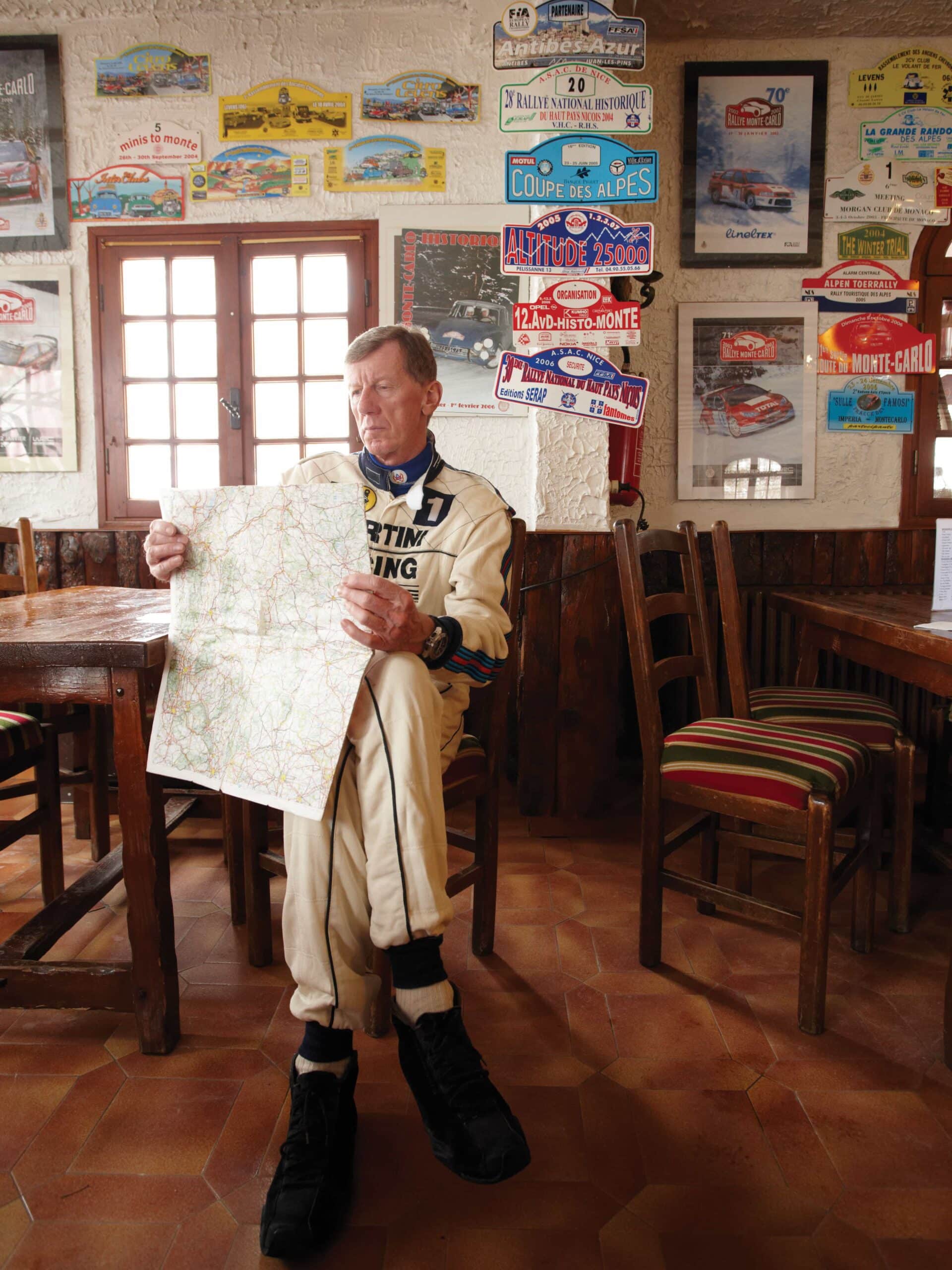Walter Röhrl Reunites with Audi Quattro on the Col de Turini
When Audi reunited Walter Röhrl with a Quattro to celebrate the car’s 30th anniversary, the rally legend was never going to treat his blast along the Col de Turini as just a bit of fun…
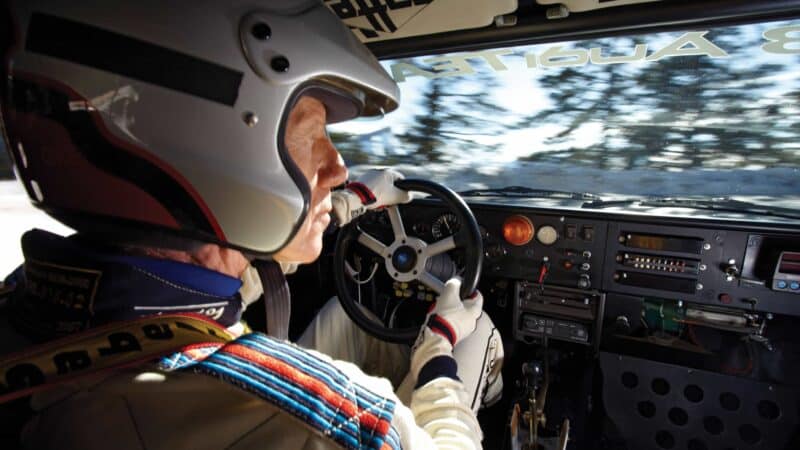
Taken from Motor sport, June 2010
Hands and arms whirl, feet flit across the pedals in a blur. But somehow the beanpole figure beside me has all the time in the world. The granite face shows no flicker, not a word is spoken, but what is there to say? He’s just doing what he does best, and I can’t quite believe I’m sitting here.
Snowdrifts bank the twisting mountain road, but the dull-grey asphalt is drying up. Perfect. There’s hardly a hint of a slide from the Quattro in his hands and the ascent is other-worldly smooth, clinical and quick. Too quick. We blaze into the sunlight all too soon, into the final right-hander, and for the first time he lets the machine break free, booting it into a final-flourish skid. He clicks his wristwatch and we pull to a halt. What the hell do I say? “Er, thank you.” He glances at me for the first time, as if he’s forgotten I was there, the granite cracks into the briefest of smiles and is gone in a trace. He looks straight ahead, waiting, ready to go again.
Walter Röhrl, an Audi Quattro A2, the Col de Turini. I shake my head.
Did that really happen?
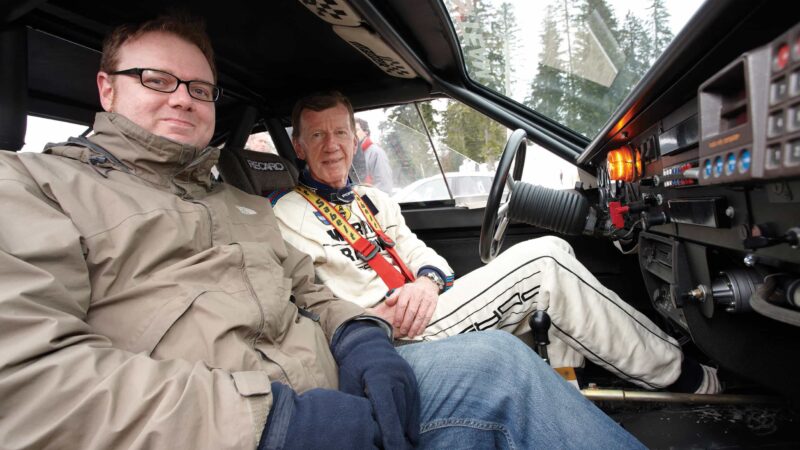
Our man Smith sits alongside
He’s a few days from his 63rd birthday, but it’s only those craggy features that give it away. Röhrl has been on the Col all week, giving other journalists the same treatment as Audi marks the 30th anniversary of the Quattro in perfect style. The car is identical to the A2 in which he won the Monte Carlo Rally for a fourth time, on his World Rally Championship debut for Audi in 1984. But this is actually Stig Blomqvist’s car – the one he beat after a duel of the maestros.
It’s a media event, but it’s hardly a chore for Röhrl, the German genius considered by some as the greatest rally driver ever. He’s treating this as his own personal test session, rediscovering a car he first rallied 26 years ago and double-checking he’s still as fast as ever.
I meet a different Walter later on back at the small alpine hotel, its walls plastered with rally paraphernalia. He perches his long frame on a straight-backed chair and talks easily about his incredible – but quirky – career. There’s a ready smile, plenty of humour, a glint in the eye. Not what I was expecting at all for a man who was once considered a ‘machine’.
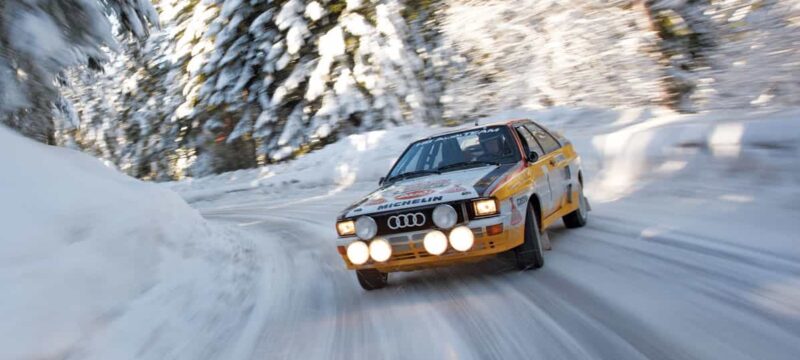
Röhrl wasn’t mucking about on his run, and was getting faster with each media session.
So is he as fast as he was? The wristwatch has shown a marked improvement every day, as the snow has melted on the Col. Today was his fastest so far. “When I was coming here, I wanted to know whether I can still handle a car like this,” he says. “Now I’m happy. I’m impressed that still after 26 years the car impressed me so much. It’s an old car, but it doesn’t feel like an old car.”
Röhrl is always associated with the Quattro, but it was only late in his top-line rally career that he took the four-wheel-drive plunge, and only two of his 14 WRC victories were scored in Audis. He’d won his first world title with Fiat in 1980 and did it again with Opel two years later, against the odds, in a two-wheel-drive Ascona. Röhrl was the scourge of Audi.
He first tested a Quattro in 1980, but was unimpressed and sceptical. He signed for Mercedes instead, which then promptly pulled the plug on its rally plans. Following a limited year on stage and track for Porsche, Röhrl joined Opel, won his title, fell out with Opel sports boss Tony Fall and moved on to Lancia, where he should have won a third WRC crown in the 037 – if he’d been bothered.
“World Championships didn’t mean much to me,” he shrugs. “In 1983 I was lying second in the World Championship by three points, from six rallies. Everybody said you must do one rally more. But I said no, I don’t want to be champion. It doesn’t give me anything.”
It’s an odd decision and he admits regret today. But then Röhrl was always, well, that bit different.
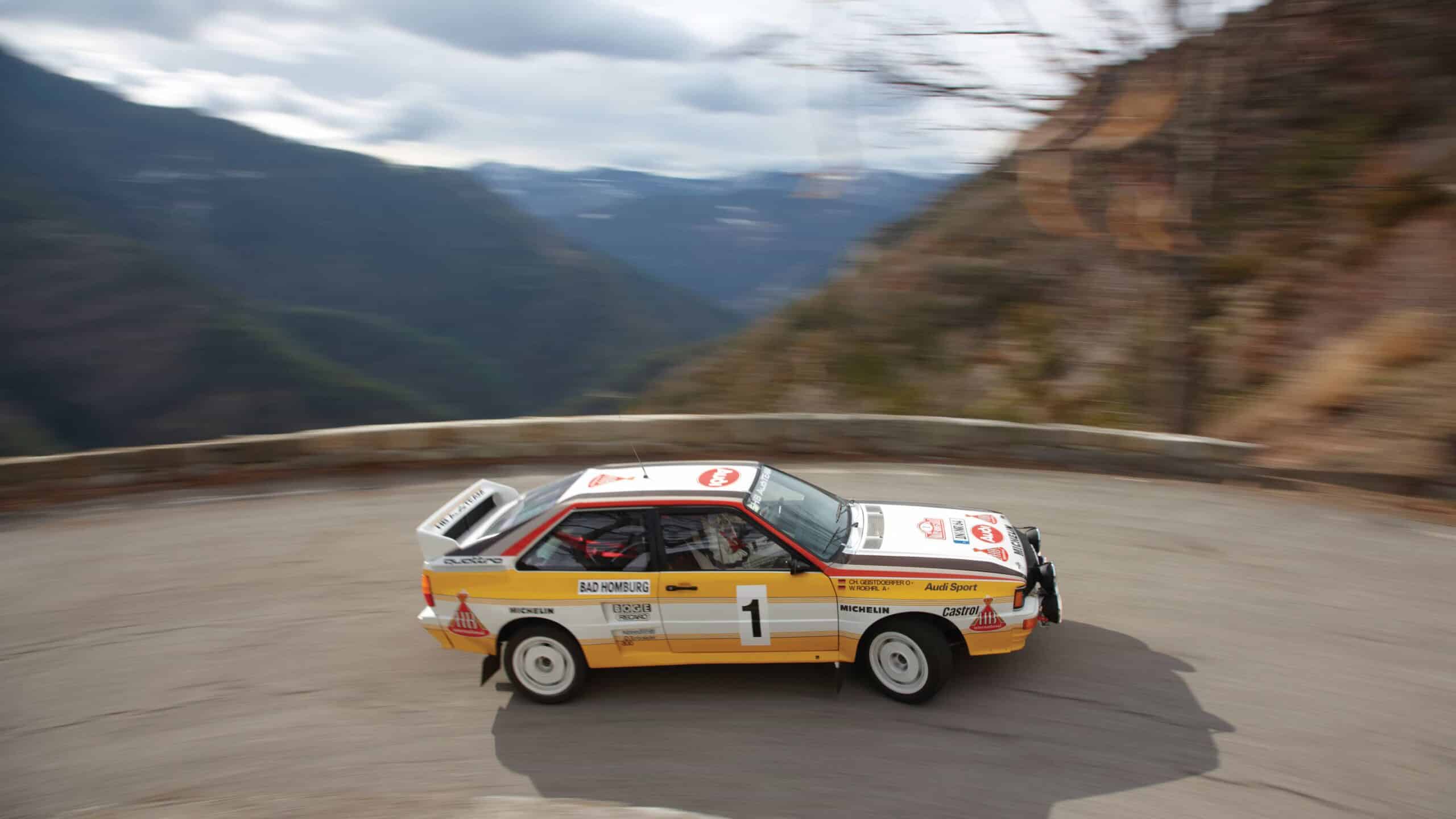
“I was strange,” he grins. “If we had a special stage and there was a delay, everybody would get out of the cars and talk together. I would sit in the car, [co-driver] Christian [Geistdörfer] would be reading his notes, and I never talked to anyone. Then after 10 minutes, start! Mr Röhrl was 30 seconds faster.
“They were thinking I didn’t like them, but it was just my opinion of how to be professional. Nothing else. Then after days like in Portugal, when I was five minutes faster in the fog, they said ‘he is [something] extra, he has nothing to do with us. He goes his own way and he’s special’. It was funny because I liked all of them, I had no problems with anybody.”
“I had strange ideas about my career. I wanted to show I was the best, then stop”
Arrogant? Perhaps. But the words, delivered with a smile, are born from a contradiction: total self-belief versus nagging insecurity that always drove him to prove himself time and again. “I had very strange ideas about my career,” he says. “I wanted to show that I was the best and then stop. After 1980 Christian said to me ‘you must be crazy to stop now, we are world champions. For the first time we can earn money!’ I told him ‘I don’t do it for money, I do it just for me. I only want to know for myself if I’m good, and out in the forest at night it’s the right place for me’.”
A union with Audi seemed unlikely. Since that test in ’80, the relationship had been more than strained, sports boss Walter Treser getting all personal in the press. But finally, in ’84, Röhrl and Audi were allied – uneasily at first.
“Stig [Blomqvist] was one of the main reasons I signed the contract,” he says. “Stig was the only one I’d never competed against in the same car. All the rest – Mikkola, Waldegård, Alén, Vatanen – I had been in the same car at the same time. I wanted to know, because everyone said Stig was the fastest man with four-wheel drive, the fastest on snow. It was a big motivation for me. I said to Audi, ‘I will help you and one of your pilots to be World Champion. But in Monte Carlo I want to show who is chief!’”
He’d won the Monte three times already. But four-wheel drive was a new challenge.
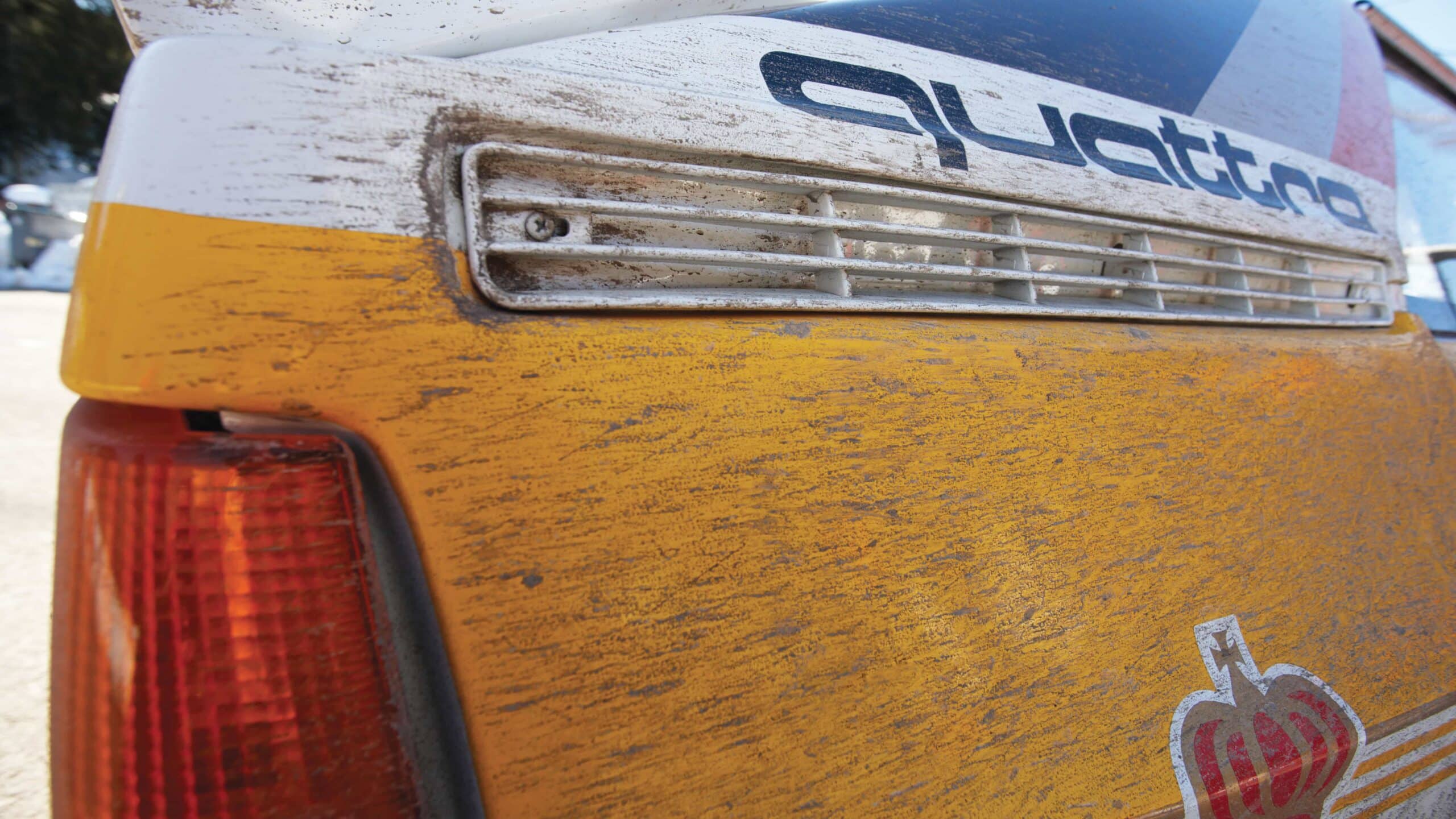
“The first time I drove [the A2] I was shocked because the turn-in was so bad and everybody told me you must play with left-foot braking. I had never done it in my life and I didn’t believe it was necessary. It took me six weeks to understand I had to learn it otherwise it wouldn’t work. In the first few weeks I had many very funny situations…
“The biggest mistake I made was that I was always trying to increase the pressure on the brake pedal. It took me a long time, but I found out you have to put constant, very light pressure on the brake pedal and then you have to play with the throttle. Then it works.
“On the other side, I’d never driven a car with so much traction, because it was 50-50. The traction was unbelievable.”
And so to the Monte. The showdown.
“Stig had done the tyre testing and I had done suspension testing. At the service the team said OK, the next stage is 80 per cent wet snow. Stig and Hannu said we must use tyre number four. OK, we’ll put all three cars on number four. After the stage, I was thinking I was quick, but Stig was 30 seconds faster. Oh Mamma Mia!
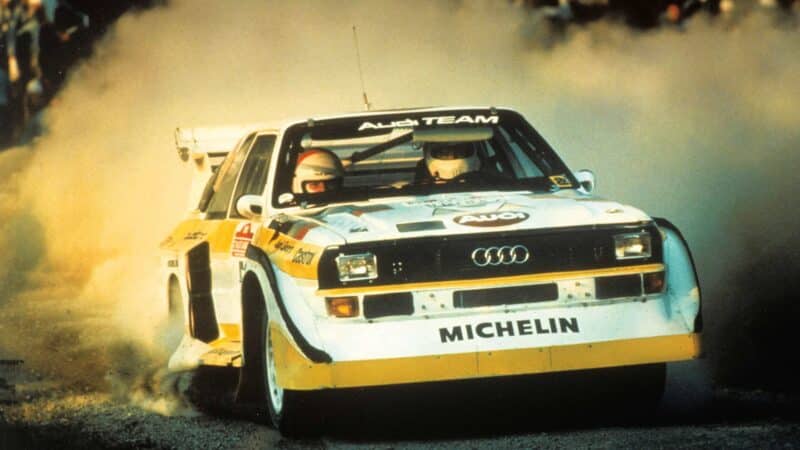
Walter Röhrl spent four seasons with Audi Sport, from 1984-1987. He won twice in that time, one being his debut with the brand on the Monte, the other in Sanremo, Italy in 1985
“The second stage was a long one, over three Cols – around 50kms. The same situation, talking tyres and saying that all three cars would be on the same. And then I said to Christian ‘ask on the radio what Stig’s time is’. He was 1min 34sec faster than me. I was thinking I should just stop and kill myself!
“We had a long road section to get to the next service. One of my best friends was spectating on the second stage and he took a more direct route to the service. I got out of the car and he said ‘you are the greatest!’. Yeah, sure – but I’m one and half minutes slower than Stig. He said ‘on the stage, I watched you. You looked so much faster than anybody else’. I said to Christian that something must be wrong. What could it be?
“I had a good connection with one mechanic – because I was new to the team. I said, ‘Hans, if you lie I kill you! What’s happened here?’. He said ‘once you start, the others change tyres’. Before the next stage I said to the team chief [Roland Gumpert], ‘Listen. If this happens once more I’m going to the next ditch and pushing the car into it’. On the next stage I was one minute faster, on the same tyres as the others!”
Röhrl went on to defeat Blomqvist by over a minute. Mission accomplished. The rest of the year was disappointing, a string of retirements blighting his limited programme. But it didn’t really matter to Röhrl. Audi and Blomqvist had their titles and he’d conquered four-wheel drive.
“Before, it was only Vic Elford who was fast in rally and racing. For me, it was easy”
“Audi had been in the business for three years when I joined,” he recalls. “When I signed I said ‘listen, I have a feeling you don’t test enough. We need our own test engineer with our own test crew, and we go out testing, testing, testing’. I think it was as a result that I won Sanremo in 1985 by six and half minutes in front of the Peugeots. By then the car was completely different – much faster, much easier to handle.”
His win in Sanremo was perhaps his defining moment, although one final, very special outing for the S1 Group B monster enhanced the Röhrl legend. In 1987 he tackled Pikes Peak, setting a new record of 10min 47.85sec, the first run of the 19.99km climb in under 11 minutes.

A not-quite-on-brand Röhrl surveys the engine bay of the A2. The car’s turbocharged 2.1-litre unit could produce upwards of 575bhp, or ‘horse brakes’
As Audi took its leave of rallying, so did Röhrl. He switched to the race tracks, proving the potency of four-wheel drive beyond the special stages in Trans-Am and IMSA in the States, and the DTM back home.
He raced a Porsche 935 as early as ’81 – a “monster” of a car, he laughs – but it’s Quattros that he recalls most fondly from his racing years (and in turn showing the only chink in his otherwise perfect English). “It was a nice experience to show that even on dry asphalt four-wheel drive is better. They were very nice cars. At the start we made a Trans-Am with 600 horse brakes, then IMSA with 700 horse brakes.”
Inevitably, the transition to the tracks was seamless. “It was absolutely no problem the first time I came to do a race to be fast,” he says. “Until then Vic Elford was the only one to be quick in racing and rallying. For me it was easy.”
Today, he still pounds the tracks as a highly valued test driver for Porsche. This May, for the first time since 1993, he will return to the Nürburgring 24 Hours in a standard 911 GT3 RS.
“I didn’t want to do it, but Porsche was pushing me,” he says. “There are no feelings from myself that I want to do it once more. They said it’s a good chance to show how near our standard cars are to the race cars. I said, OK, I can understand that.”

The road car work offers the master more of a challenge than you might think. “In a 911 GT2 last year at Pflanzgarten I hit 317kph (197mph) – in a standard car. In the race car we were only doing 285kph (177mph)…”
Impressive. But it can never hold a candle to his memories of life on the special stages. His love of rallying endures and he is saddened that the sport has been experiencing a trough. He blames high-tech cars rather than Sébastien Loeb’s mastery.
“Today, it’s a completely different world. It’s more like a video game. Sébastien is the man who is doing his job like I expect you have to do it. But all the rest… [Mikko] Hirvonen is absolutely the number two at this time, but people like [Jari-Matti] Latvala… if you are a team chief running him you get grey hairs!
“It’s a shame rally sport is not so popular, especially for young people. It is the best teacher for correct car driving. For a young rally driver, he must know that if he is playing the hero the tree and ditch is not going to disappear. But race drivers for the past 20 years have said ‘oh, we need more space for our mistakes!’.
“I have done Monte Carlo in 1973 with 150 horse brakes, and in ’86 with 575 horse brakes. It was the same ditch, the same tree. That is the reason why I don’t like racing…”
The granite splits once more. Back in the day, Röhrl was a machine behind the wheel. He still is. But the genius has a heart after all.
